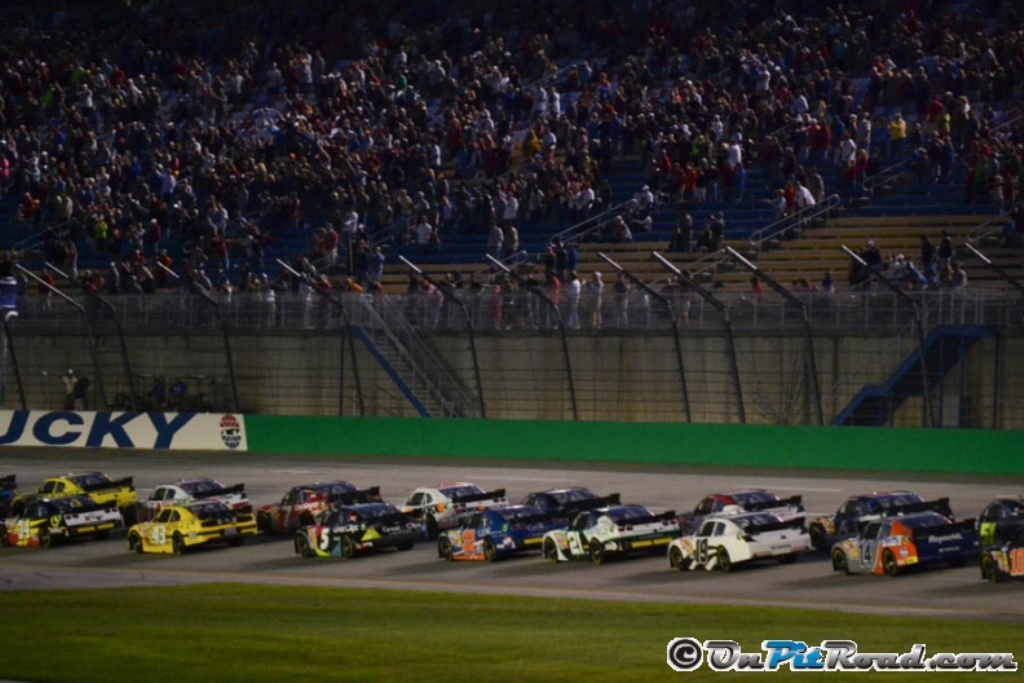
Photo Credit: Mike Holtsclaw
NASCAR announced on Thursday that changes to the rear spoiler, front splitter, and rear deck fin will be utilized in two upcoming Sprint Cup Series races this season as NASCAR looks to continue to lower downforce to improve competition on the race track.
The chances announced will only be in effect for the races at Michigan in June and Kentucky in July. Initial moves implemented before the start of the season combined with a Goodyear tire matched more closely to the lower downforce package have resulted in closer competition through the season’s first 12 races. So why more changes? NASCAR’s Steve O’Donnell, Executive V.P. of Competition had the answer.
“I think we look at it as a never-ending journey; if we can improve we’re going to do that,” O’Donnell said. “We wanted to go the direction of low downforce, see how that worked, not kind of go all the way in and hope that we are directionally right. And we are seeing that play out. We’ve seen some great racing at the beginning of the year. But we also knew that we had some more levers that we could pull if the direction kind of proved out, so we’ve tried some of those things. We’ve tested it and what we’ve also wanted to do is lower some of the corner speeds to allow for even more passing. That was one of the areas where we’ve seen minimal change, but there are some levers we can pull to really drive that down.”
Some of the changes for the races at Michigan and Kentucky include: a reduction in the height of the spoiler from 3.5 inches to 2.5 inches, a two inch reduction of the spiltter, and a re sizing of the rear deck lid.
NASCAR required teams to weld truck arm mounts for the recently completed Sprint All-Star Race at Charlotte Motor Speedway, downforce generating electric fans were removed and the rear toe alignment was reset to zero to reduce sideforce. The changes to truck arm mounts and fans are to remain in place for the remainder of the 2016 season. The rear toe adjustment was originally only supposed to be in effect for the All Star Race, but will now be utilized in the Michigan and Kentucky races.
“We have worked collectively on some directions we want to go in, but to do that right we think the final step is to let that play out on one or two tracks,” O’Donnell said. “And these are the two Kentucky and Michigan that we’ve played out and let the teams concentrate really on what they’ve done to prepare for the year. We think that’s manageable and that’ll give us enough data to look at for 2017.”




